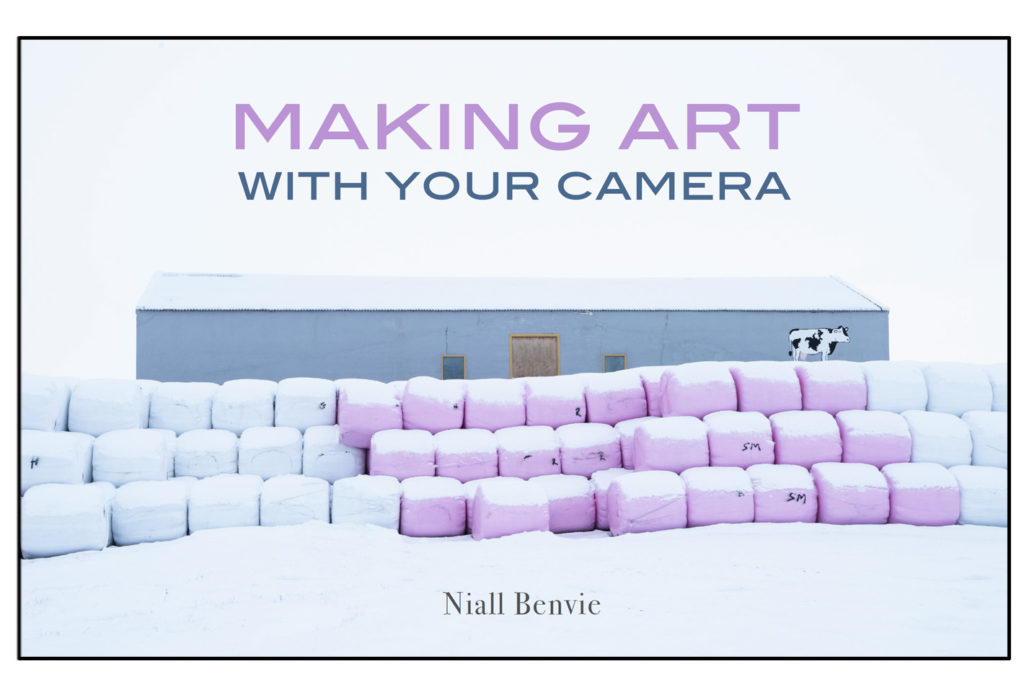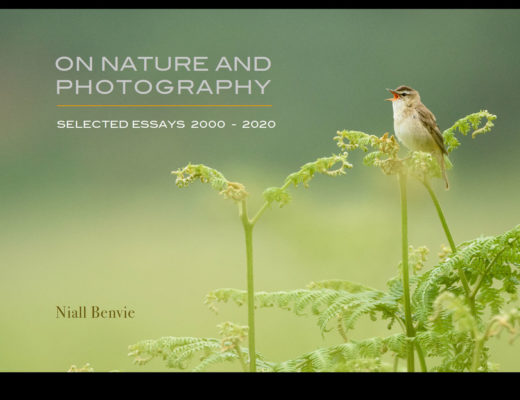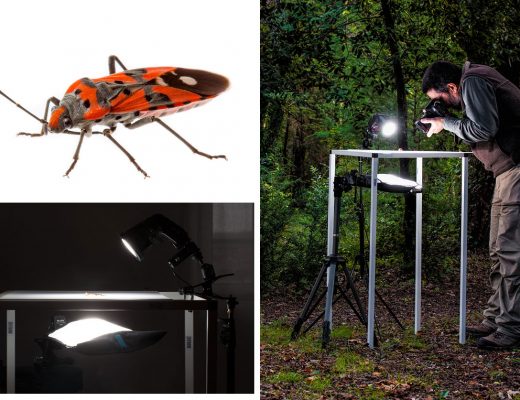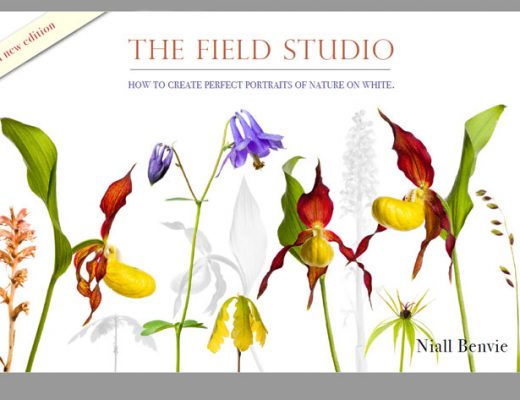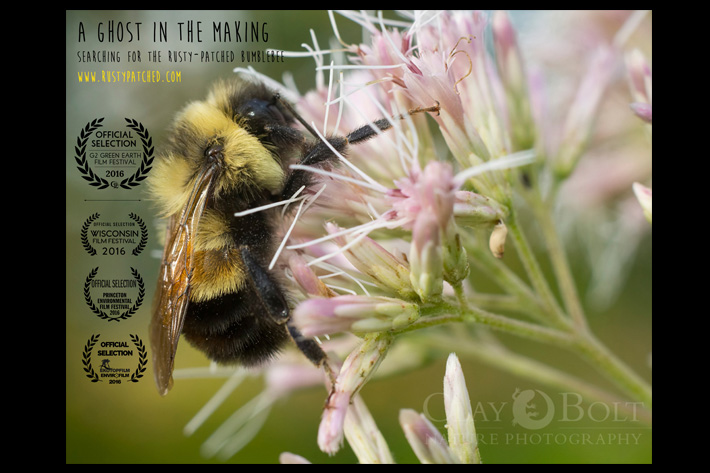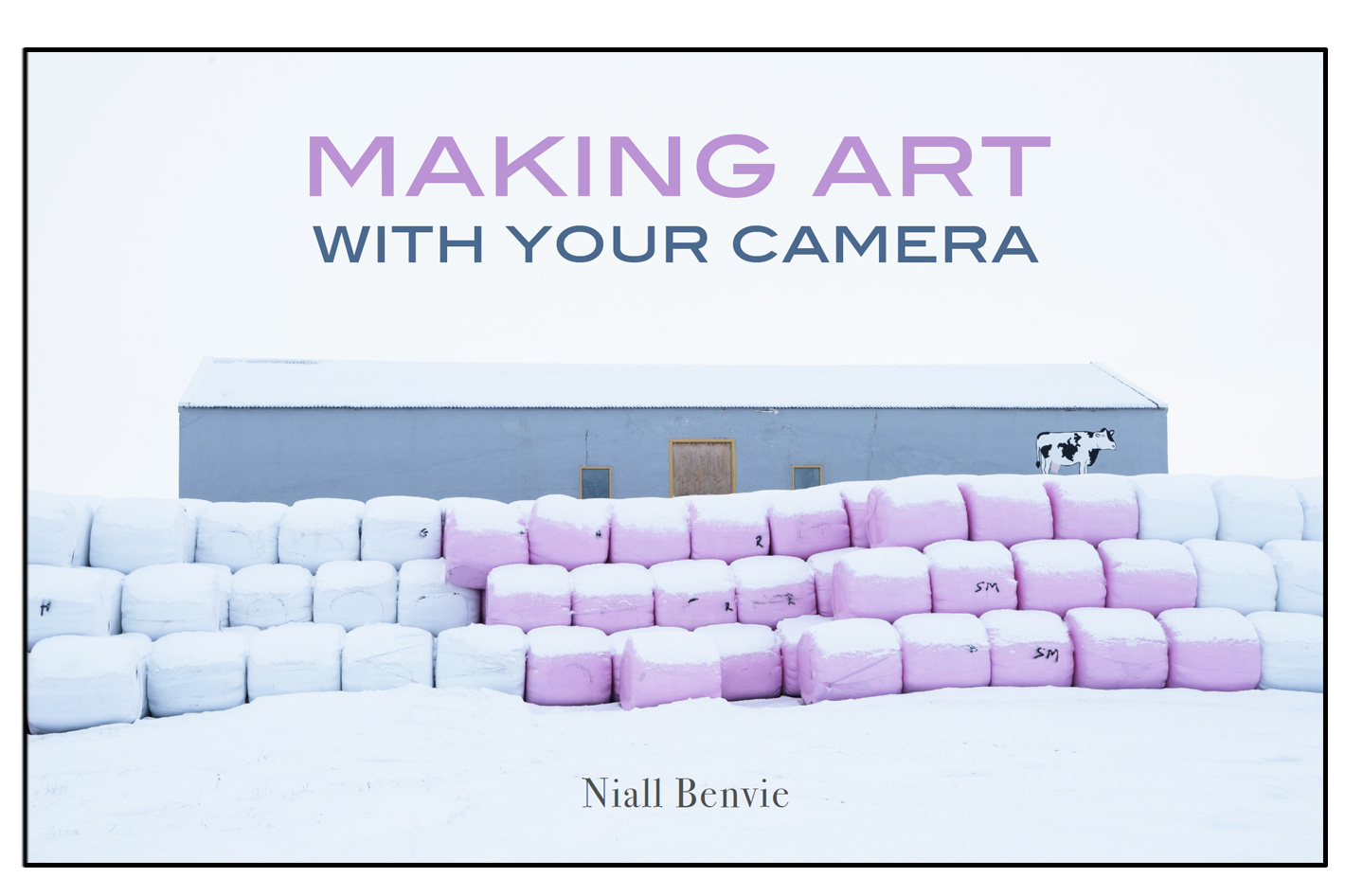 Rather than pursuing Ikea-like simplicity, Niall Benvie is more interested in creating Louis XV complexity, and that explains why his work stands above all the “me-too” photos online today. Discover the eBook!
Rather than pursuing Ikea-like simplicity, Niall Benvie is more interested in creating Louis XV complexity, and that explains why his work stands above all the “me-too” photos online today. Discover the eBook!
If you’re searching for a solution to leave behind what appears to be a photography rut, the newest eBook from Niall Benvie is something you should get and read. Then pick your camera and try the suggestions yourself, as simply reading it doesn’t help much. The 119 spreads (2560 x 1600 pixels) eBook, PDF format, has 21 000 words, 135 images and a price of €15. Consider it the most affordable passport to a photographic adventure which may well change your path… hopefully away from the “me-too” groups on the Web.
I’ve written about Niall’s eBooks before, and on a shelf behind my desk I’ve a copy of Outdoor Photography Masterclass, from 2010, a printed book, 176 pages, which I bought around the time when I first got in touch with him, through the Meet Your Neighbours (MYN) project, which he co-founded with photographer Clay Bolt, whom I knew through a common friend, Paul Harcourt Davies. To this day, I continue to be amazed by Niall’s patience to explore and refine areas that are not common to many photographers.
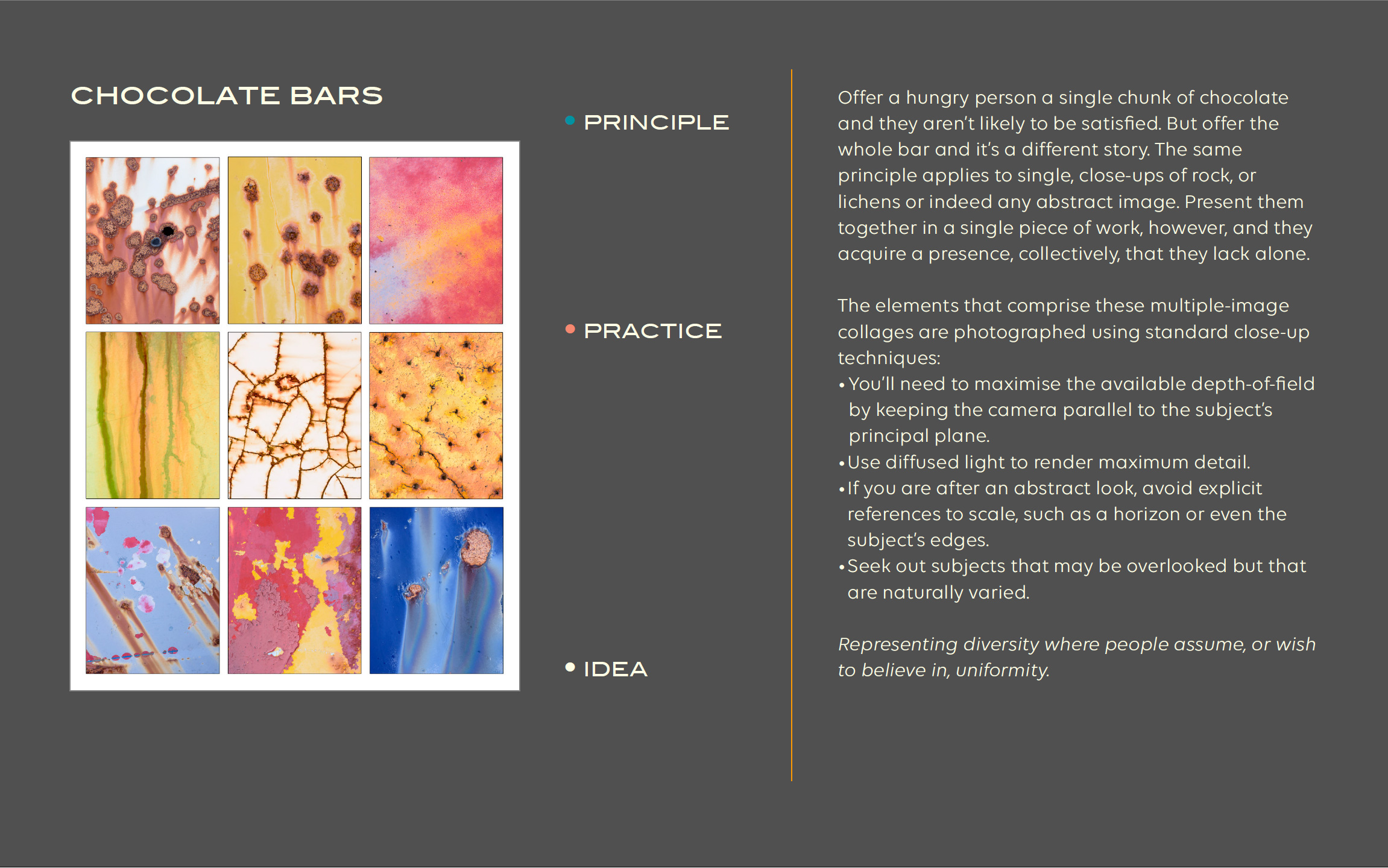 Nausea and attentionseeking art
Nausea and attentionseeking art
The early signs of Niall’s explorations are already present in the printed book Outdoor Photography Masterclass, and the eBook You’re not a Photocopier – whose complete title is “You are not a photocopier! – from snapper to artist in six lessons” – took things further. Retrospective. Thirty Years Of Photography compiled some of his past work, while pointing new paths, and finally this Making Art with your Camera mixes some of the previous experiences, like The Field Studio – the guide for MYN-style outdoor photography – and expands on them while also exploring new creative options, some of which will take you away from what is usually considered photography and enter an area which some will call art.
THE PROBLEM WITH ART, writes Niall, opening his new eBook, “is that no-one seems to be able to agree on what exactly it is. Defining it is as fraught as trying to wrestle a freshly-caught octopus into a carrier bag during a heavy storm. It’s doomed to failure and sure to provoke a few cross words in the process” to add, “Empty art shouts, ‘Hey everyone, look at ME!’ Its main object is to impress, to be crowd-pleasing. But there is little sign of the artist or her ideas in it. Other art, though, engages you in a way that leaves you changed somehow. Like junk food, empty, attentionseeking art doesn’t satisfy. You just feel a little nauseous after you’ve seen too much of it. Nourishing art, in contrast, sustains the viewer and stimulates reflection and imagination.”
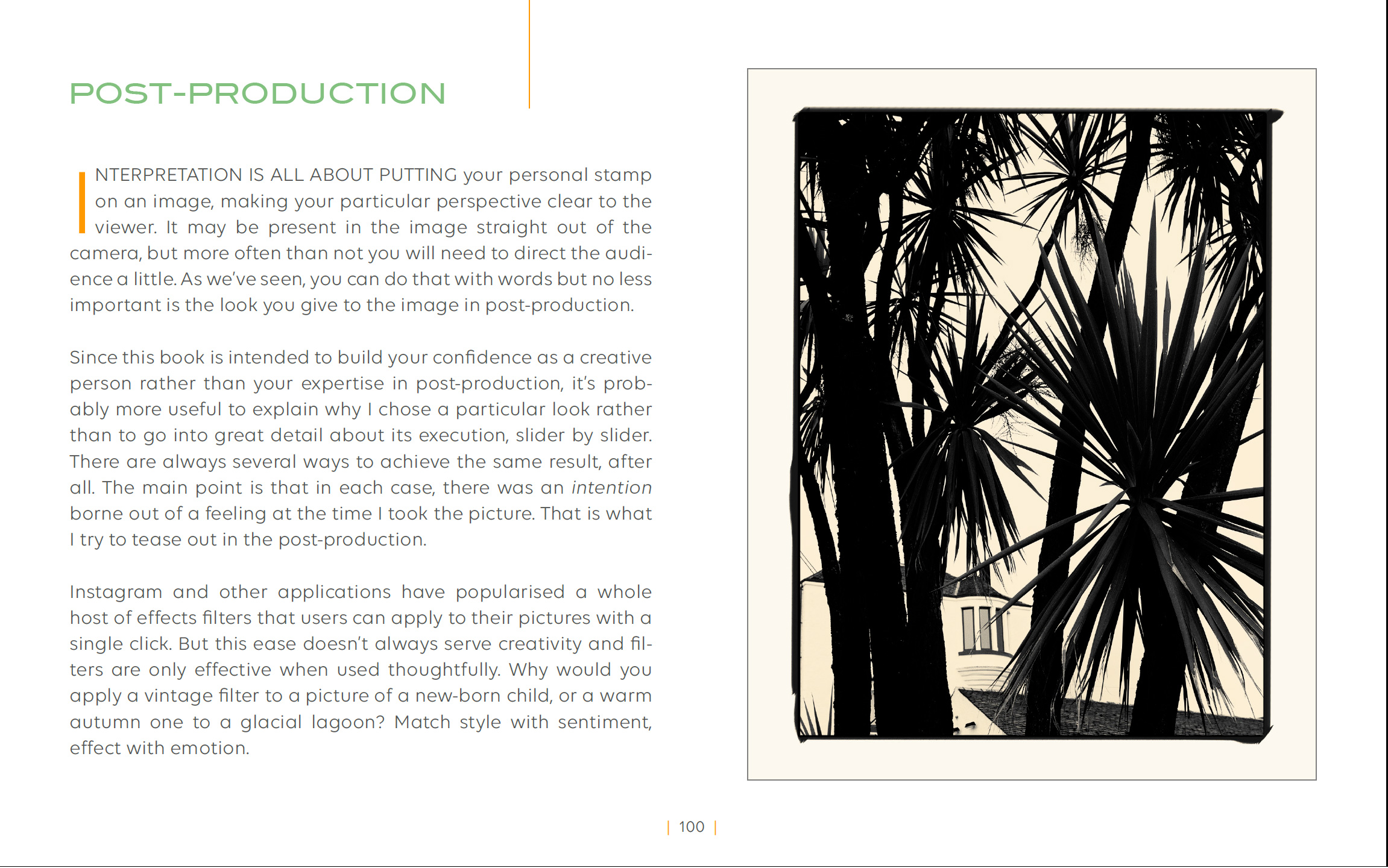 Art for “big cameras” and smartphones
Art for “big cameras” and smartphones
The notes above should give you an idea of where Niall Benvie stands when it comes to photography as is digested – should I say devoured? – today. I don’t want to spoil the pleasure for those who, after reading these excerpts, want to buy the eBook, so no more quotes, besides this one, which reveals the goal of the eBook: “That’s what I’d like to help you think about here. I will describe methods to let you to present your ideas, your world-view, to your viewers. Nevertheless, these are just springboards to put you on your own path, away from the generic and towards the specific.”
So, no more Ikea-like simplicity, as we enter the path to create Louis XV complexity, leaving behind the fast food for some more “meaty” suggestions. As Niall Benvie said when introducing the eBook, “the different sections have been evolving, in some cases, for more than a decade and I felt that the ideas were now mature enough, and my explanations practised enough, to allow me to produce something of value to other photographers wanting to find their own voice. And that’s whether you use a “big camera” or an iPhone.”
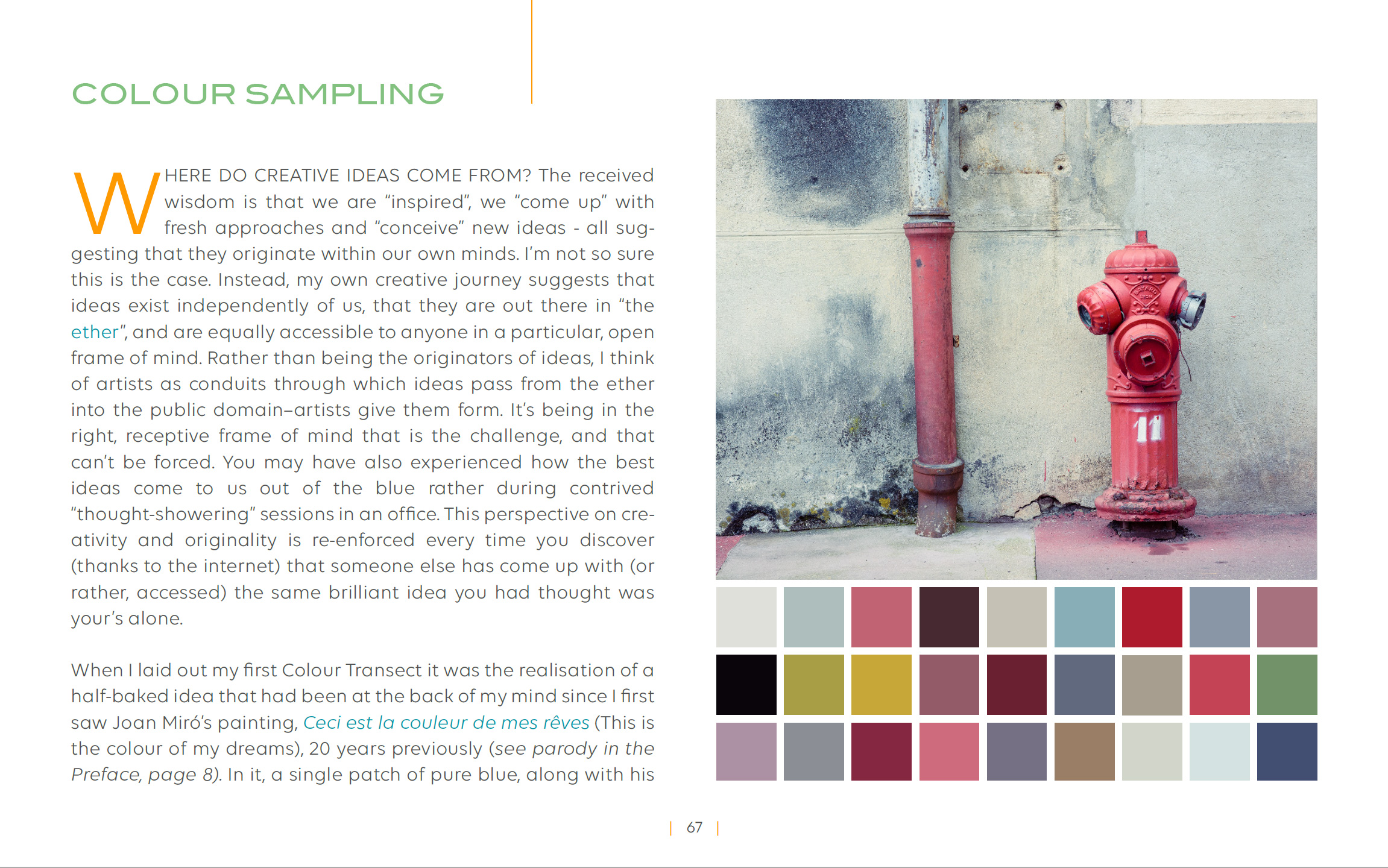 Chocolate bars and Kaleidoscopes
Chocolate bars and Kaleidoscopes
Colour Transects, vintage natural history prints, “Quilt-work”, “Chocolate bars”, species captchas and more- all the ideas are there, explained with Niall’s usual openness. He is not one to keep secret about his working methods, he even explains how he builds the colour transects that give another dimension to his photographs or the page layouts for his “Chocolate bars”, collages that go beyond the simple amassing of multiple pictures.
Using Deconstruction to share another perspective on landscapes is something that is not new to me, having done it and preached about it at workshops, as well as using colour palettes with photographs, but Niall’s patience to explore those paths to the limit – and beyond – offer results that are well above my humble examples. And then he moves on to Objectography, which takes the MYN concept further, for a more “artistic approach”, and embarks on a journey of discovery of Kaleidoscopes, moving further away from photography as a documental representation of reality.
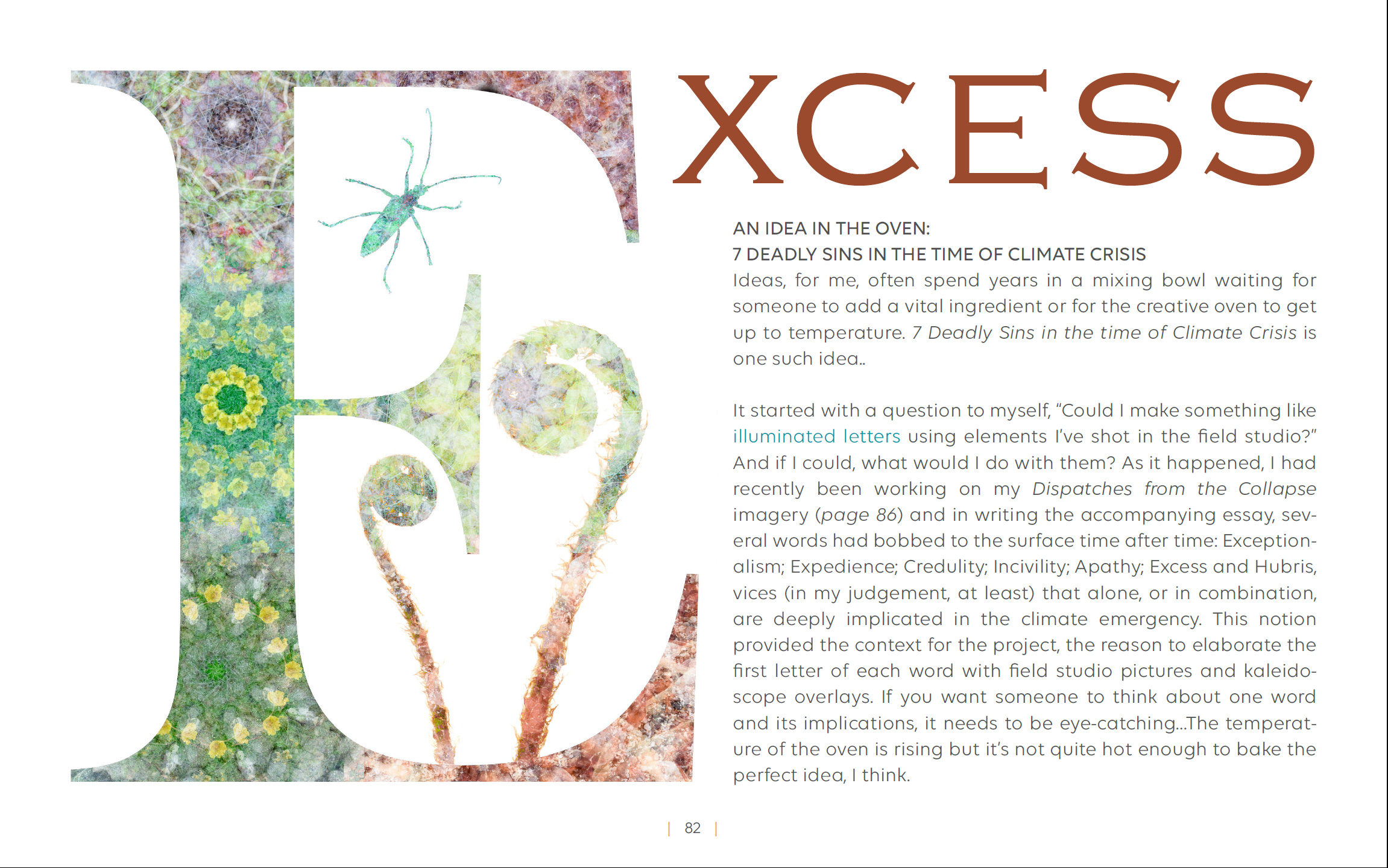 From Colour Transects to illuminated letters
From Colour Transects to illuminated letters
The Colour Sampling section, which sets the groundwork for the Colour Transects, is a must-read section for all photographers and creatives aspiring for new ways to show their work. A section on Adding the Words, dealing with font types and how to use them confirms that although a picture is worth a thousand word, sometimes it makes sense to add a couple more. Buy the eBook and discover it by yourself.
Regarding letters, Niall Benvie mixes modern digital photography with the concept of illuminated manuscripts produced in monasteries between the 12th and 17th century. It all started when he asked himself: “Could I make something like illuminated letters using elements I’ve shot in the field studio?” Apparently, he can, and that’s a project we will see more from him in the future… as others he is already exploring and may well be in the “oven” for some time before being shared.
Making Art with your Camera is not an eBook packed with tricks and tips, promising to make you a photographer in a matter of hours, like so many others. Although it does not have exercises to complete, it requires a lot of work from those who want to do more than read it. Each chapter or section has a page with three words that suggest a workflow: Principle, Practice, Idea. Those three words are at the beginning of the eBook, and they are there for a reason: as Niall Benvie says “these [suggestions] are just springboards to put you on your own path, away from the generic and towards the specific.”
Do you accept the challenge?

Filmtools
Filmmakers go-to destination for pre-production, production & post production equipment!
Shop Now